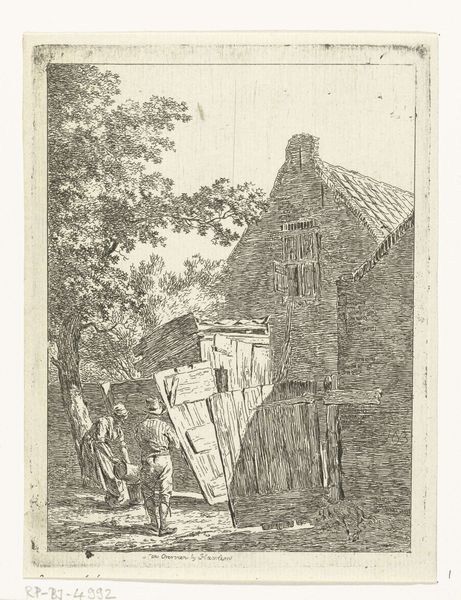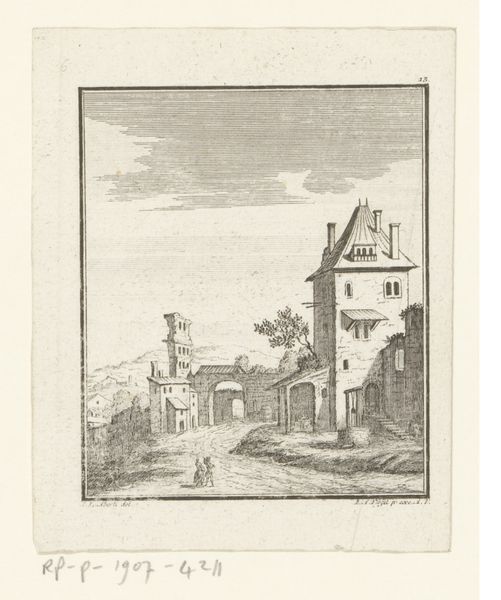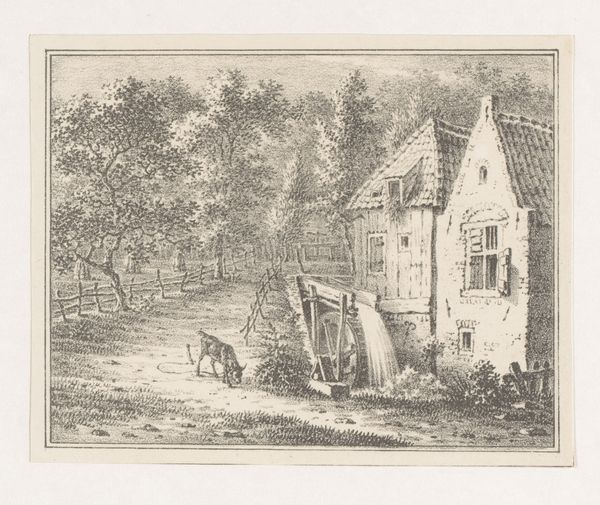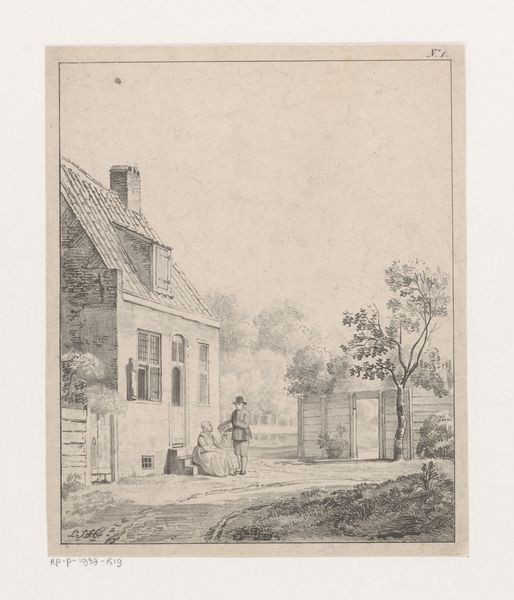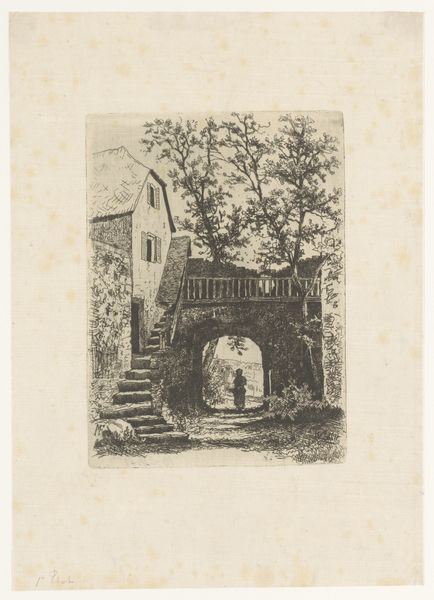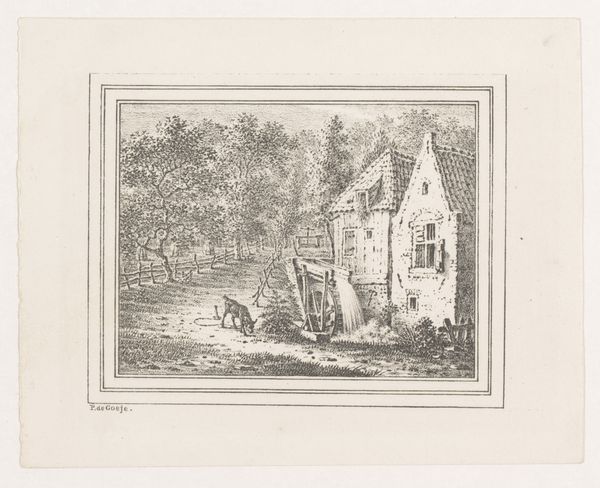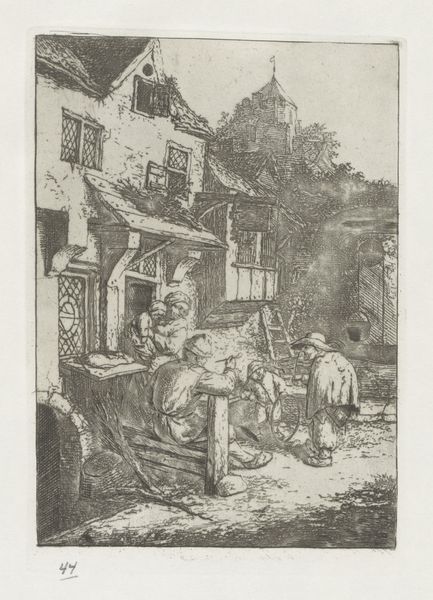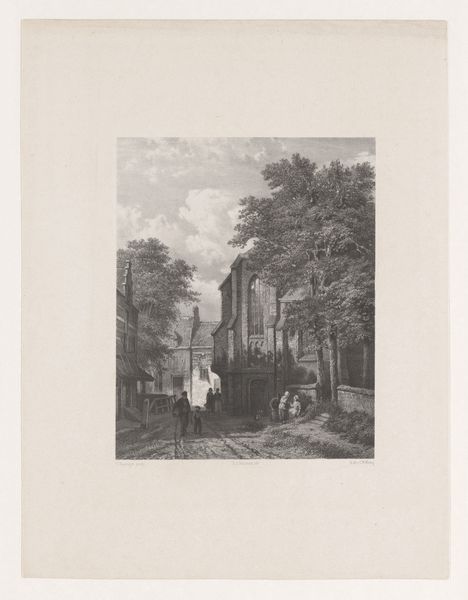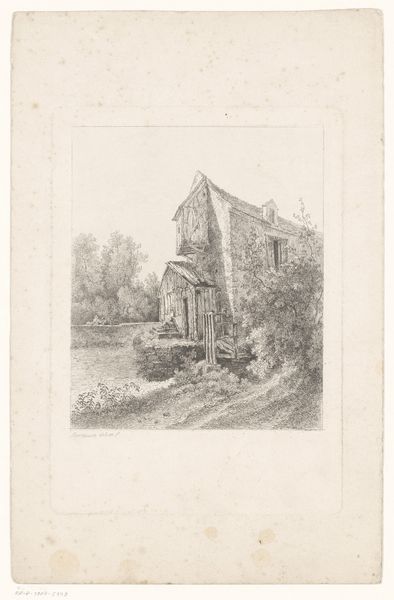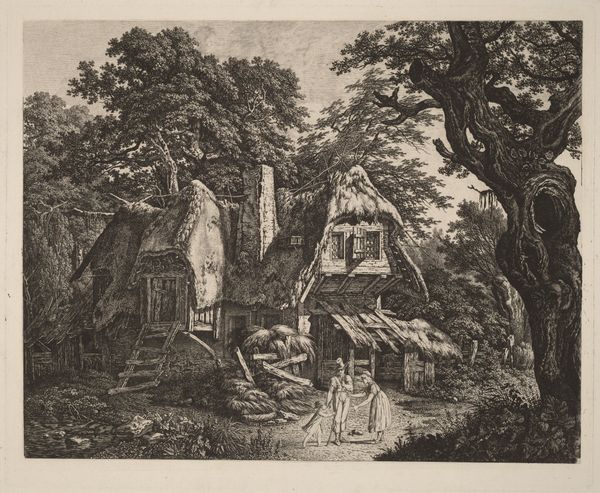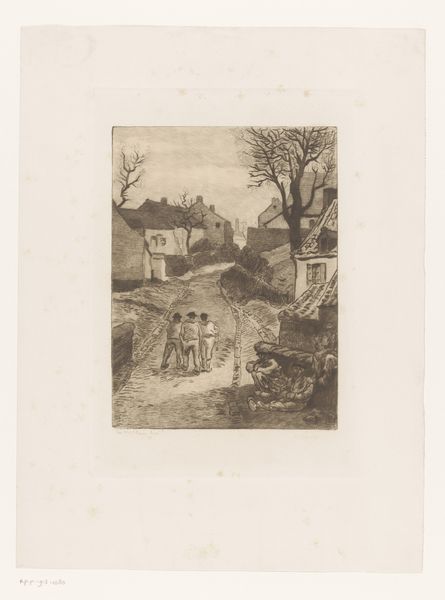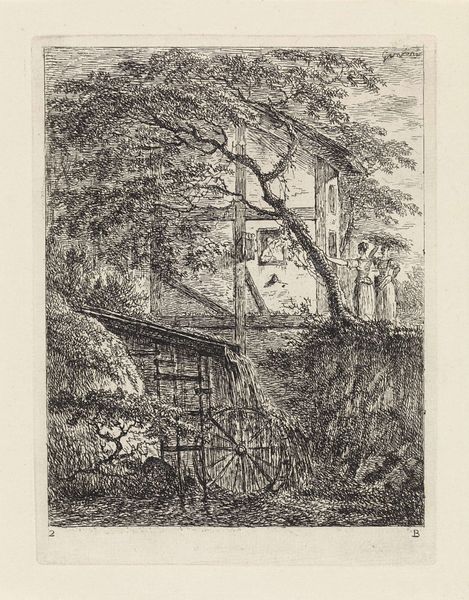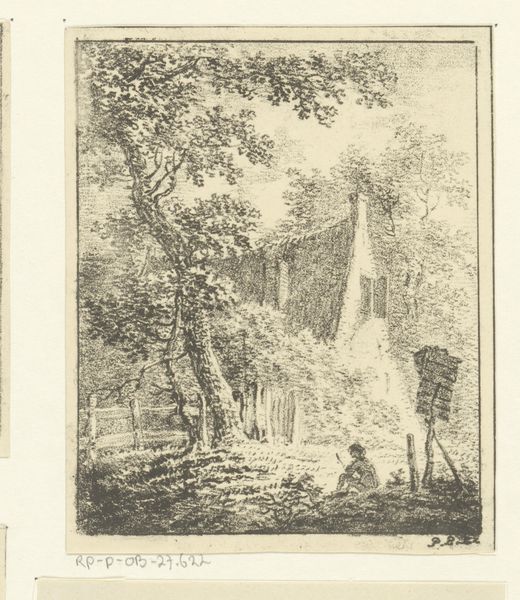
etching
#
dutch-golden-age
#
etching
#
old engraving style
#
landscape
#
etching
#
realism
Dimensions: height 227 mm, width 179 mm
Copyright: Rijks Museum: Open Domain
Editor: This etching from 1888, titled "Watermolen" by Jean Théodore Joseph Linnig, depicts a watermill in a landscape. I find the level of detail remarkable. It gives a glimpse into rural life. How would you interpret this work? Curator: I see this as more than just a pretty landscape; it is a commentary on the intersection of labor, nature, and society. Linnig, working in a rapidly industrializing Europe, offers a romanticized yet potentially critical view of pre-industrial labor. What do you make of the figures depicted? Editor: There's a small group near the mill and a lone figure on a hill in the background. They seem part of the landscape rather than the focus. Curator: Exactly. And that's where it becomes interesting. By situating the people this way, Linnig might be suggesting their interdependence with the landscape and the technologies within it. Consider the watermill – it harnesses natural power, impacting both labor and environment. To me, Linnig seems to hint at the transformations industrialization threatens to bring about. Do you think it’s a nostalgic image? Or a premonitory one? Editor: I hadn't considered that perspective. It does make me wonder if the artist was celebrating this lifestyle or mourning its inevitable change. Maybe it is both at the same time. Curator: Precisely. By understanding the socio-economic context, we gain a deeper appreciation of the artwork as a dialogue on labor, identity, and progress. The Dutch Golden Age style is just a façade for a deeper truth about society. Editor: That’s really given me a different way to appreciate the piece. I thought it was a pretty landscape, but it's also asking us to consider our relationship to the environment and our way of life. Thanks!
Comments
No comments
Be the first to comment and join the conversation on the ultimate creative platform.
